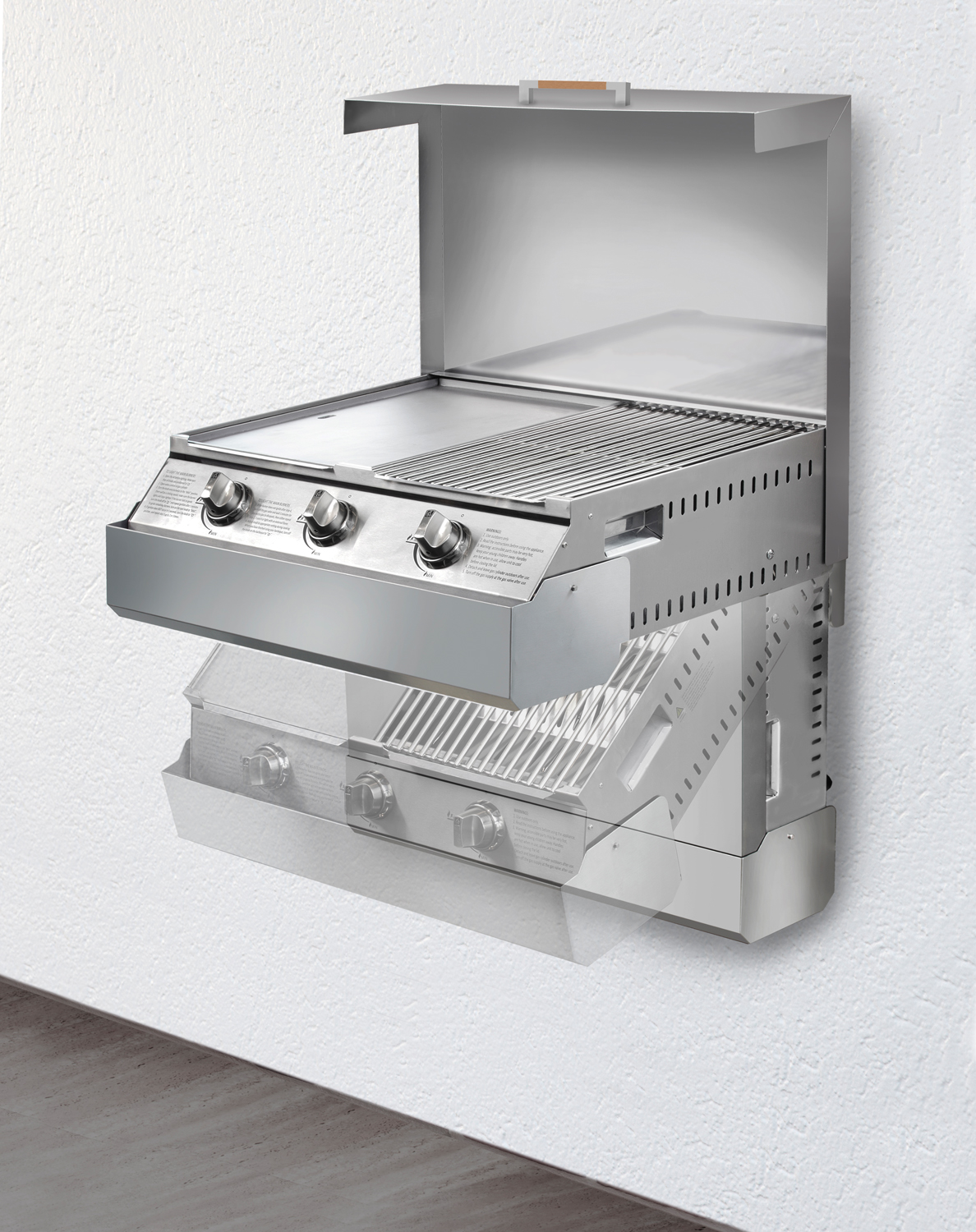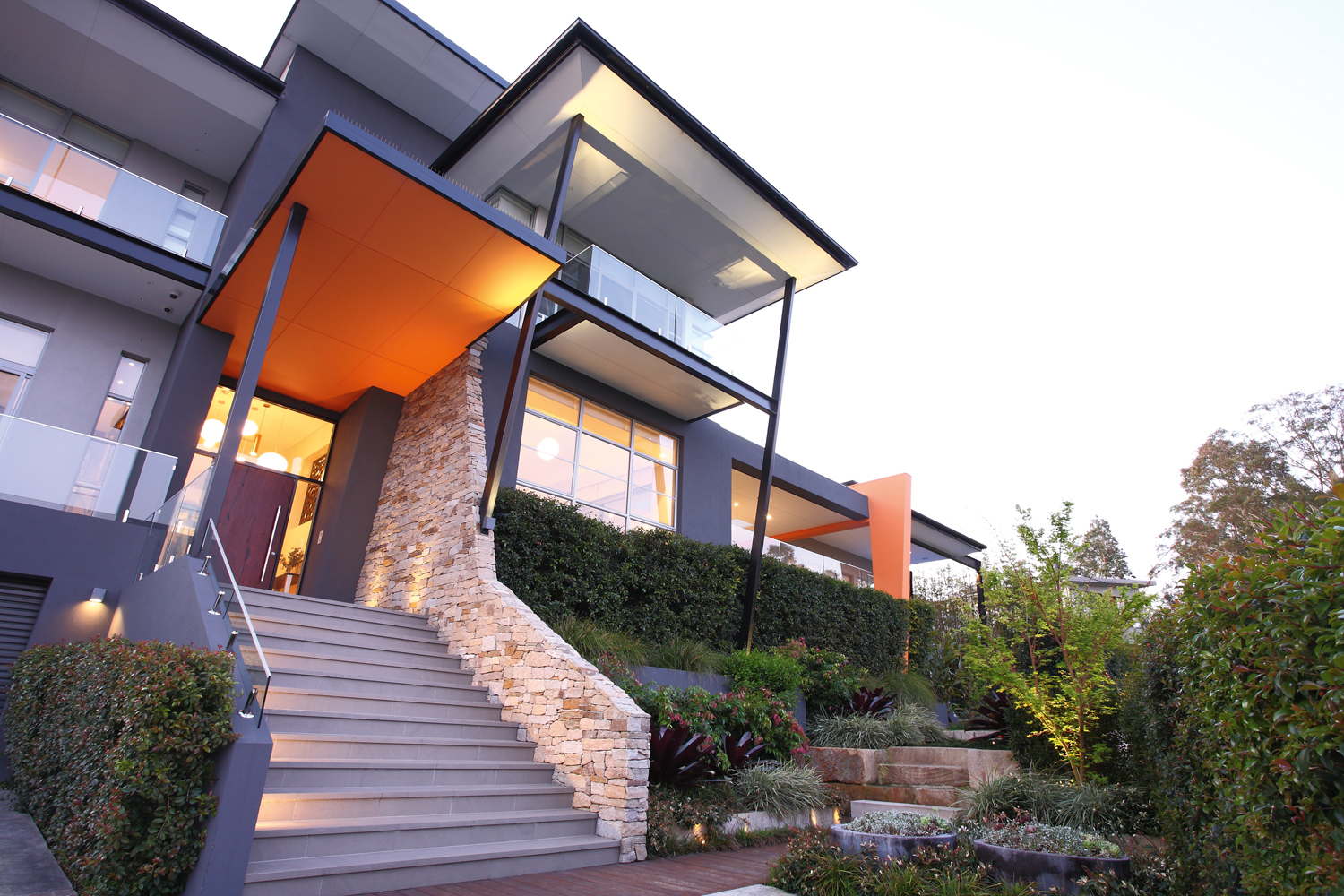Outdoor rooms designed for both adults and kids mean its playtime all the time
Words: Natalie Raad
Designing a child-friendly outdoor room is a clever way to encourage outdoor play. And with myriad play apparatus choices available — from cubby-houses, swings and slides to sand pits, monkey bars and a rock-climbing wall — creating an outdoor play area is an easy way to add appeal and functionality to your outdoor room.
In this day and age, outdoor play is the preferred option for kids, as opposed to the indoor, high-tech alternatives. Getting the kids outside and playing is easy if you’ve designed a suitable play area.
Like any landscape design project, planning is the key to success. Taking the time to design an outdoor room that is suitable for both adults and children will ensure your outdoor space is enjoyed by everyone.
Ideally, play areas should be designed to blend in with your outdoor room rather than be the first thing that is seen. Plantings and structural elements such as screens or features that are sympathetic with the surrounding landscape will help the play area become part of the backyard environment.
To make play areas less obvious, it’s recommended you position them to one side of the backyard or in a slightly less visible space. The location and visibility of the play area will be determined by the age of the children who will use it. Parents need to be able to see young children at all times, so only partial screening of the play area is possible, whereas older children can play without supervision, so the play area can be totally screened if need be.
It’s also important to look at the traffic flow around the play structure and make sure it fits in with the landscape design of your outdoor room. For example, there’s no point in having plants nearby if they’re going to be trampled by children coming off a slide.
Given that residential yards and outdoor rooms come in all shapes and sizes, one swing set configuration is not going to work in every setting. Which is why playground manufactures offer flexible designs that can be adjusted to safely accommodate any situation — be it a hard-to-fit area or an unlevelled yard.
Playground equipment manufacturing has come a long way. These days, you can find equipment manufactured from a variety of materials to suit all environmental conditions such as powder-coated galvanised steel, plastics and treated timber and environmentally friendly, chemical-free softwoods such as cedar and redwood. This means no matter what type of outdoor room you have, you’ll be sure to find some play apparatus to suit.
When it comes to play areas, the size of your outdoor room need not be an issue. You don’t have to have an abundance of space to ensure the kids have a fun, safe space to play in. With some clever thinking and planning, any outdoor room — whether it’s a big backyard or a small courtyard — can have a play space included.
The size of the yard will, however, determine the size of the play apparatus that can be used. While a small outdoor room might have space for only a single swing or small cubby house, a larger outdoor space will be able to accommodate a sprawling maze of play items.
In small outdoor rooms, the key is to make some parts multifunctional. That way, when the kids aren’t playing, the space can be used by adults. For example, you can integrate a timber daybed in a sandpit and have a removable lid on rollers embedded in the deck. This will maximise the space you have.
Creating multi-purpose areas will maximise the play potential of any outdoor room. Driveways (suitably fenced) and rear tiled areas can be used for bikes, skateboards and games of handball; while portable items such as trampolines and basketball/netball hoops can be used and then moved to one side or stored away.
In larger outdoor rooms where space is not an issue, a designated play area can be created where play equipment can be fixed and readily available for kids to engage with at any time.
Most modern play equipment is versatile and compact, meaning you can easily adapt and add to your play area to suit the needs of your children as they grow.
When planning your outdoor room and children’s play area, it’s important to plan ahead and make sure you get the maximum use of the area over time as the kids are growing up. Most people start with a basic structure and add to it as the offspring get older and are able to handle more climbing and more adventurous play.
When buying a play system, you can ensure longevity by selecting a modular and expandable design that kids will grow into rather than grow out of.
Play areas should be designed with a contingency use once the area is no longer needed as a play space. This may involve simply extending garden or lawn areas to reclaim the space or a specific alternative use, such as an area for a spa.
Things like sandpits can later be converted into garden beds once the kids have grown up. The more elaborate the play area, though, the more friendlyextensive the transformation will be.
Safety in your outdoor room is a priority, so it’s important to keep views of play areas unrestricted, especially if the area will be used by small children. Keep all wooden play equipment sanded and well-oiled to avoid splinters. Avoid using treated pine and make sure nails are hammered in on any timber structures or decking. Ensure all structures in the garden, whether they’re designed for play or not, are robust and won’t deteriorate quickly due to the weather.
Safety surfaces are also essential for play areas, with the choice of material dependent on the type and height of the playground apparatus. With higher structures (over 500mm) it’s recommended that some sort of soft fall material be used. There are three main types: sand, bark and rubber. Bark is the most popular in residential play areas as it’s cheaper and blends into the backyard more naturally.
Playground equipment should never be placed on hard surfaces such as concrete or asphalt. Grass is also not a good safety surface as it may quickly turn to hard earth in areas of high traffic. Shredded bark and soft play mulch are considered acceptable shock-absorbing surfaces when installed and maintained at a sufficient depth under and around playground equipment.
It’s recommended that you have weekly and monthly checks of your play area, as this will ensure your children’s safety. And the appeal of creating a play space in the backyard is that children can play freely and safely in the comfort of their own home.
As with any landscape project, the cost of a play area will be dependent on the size, complexity and quality of the materials used. A play area can be as simple as a commonly available swing set positioned on a sandpit costing around $600, or a detailed labyrinth of swings, bridges and climbing towers that could cost many thousands of dollars.
Designing a child-friendly outdoor room need not be hard work. It can be as simple as incorporating a lawn area for kids to run around in or a designated play area equipped with play equipment. And in an outdoor room that is designed to be enjoyed by both young and old, its playtime all the time.
SAFETY COMES FIRST
• Keep views of play areas unrestricted, especially if the area will be used by small children.
• Keep all wooden play equipment sanded and well-oiled to avoid splinters.
• Avoid using treated pine.
• Make sure nails are hammered in on any timber structures or decking.
• Ensure all structures, whether designed for play or not, are robust and won’t deteriorate quickly due to the weather.
• Safety surfaces are essential for play areas. For high structures (over 500mm) a soft fall material is recommended, such as shredded bark or soft play mulch.
• Play equipment should never be placed on hard surfaces, including grass, which can quickly turn to hard earth in areas of high traffic.
• Weekly and monthly checks of play areas are recommended.




